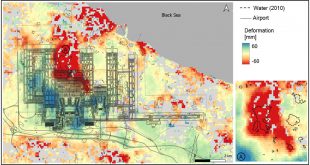ISPRS International Journal of Geo-Information, 7(10), 408, (2018).
Comparison of Landscape Metrics for Three Different Level Land Cover/Land Use Maps
Sertel, E., Topaloğlu, R., Şallı, B., Yay Algan, I., & Aksu, G.
Abstract: This research aims to investigate how different landscape metrics are affected by the enhancement of the thematic classes in land cover/land use (LC/LU) maps. For this aim, three different LC/LU maps based on three different levels of CORINE (Coordination of Information on The Environment) nomenclature were created for the selected study area using GEOBIA (Geographic Object Based Image Analysis) techniques. First, second and third level LC/LU maps of the study area have five, thirteen and twenty-seven hierarchical thematic classes, respectively. High-resolution Spot 7 images with 1.5 m spatial resolution were used as the main Earth Observation data to create LC/LU maps. Additional geospatial data from open sources (OpenStreetMap and Wikimapia) were also integrated to the classification in order to identify some of the 2nd and 3rd level LC/LU classes. Classification procedure was initially conducted for Level 3 classes in which we developed decision trees to be used in object-based classification. Afterwards, Level 3 classes were merged to create Level 2 LC/LU map and then Level 2 classes were merged to create the Level 1 LC/LU map according to CORINE nomenclature. The accuracy of Level 1, Level 2, Level 3 maps are calculated as; 93.50%, 89.00%, 85.50% respectively. At the last stage, several landscape metrics such as Number of Patch (NP), Edge Density (ED), Largest Patch Index (LPI), Euclidean Nearest Neighbor Distance (ENN), Splitting Index (SPLIT) and Aggregation Index (AI) metrics and others were calculated for different level LC/LU maps and landscape metrics values were compared to analyze the impact of changing thematic details on landscape metrics. Our results show that, increasing the thematic detail allows landscape characteristics to be defined more precisely and ensure comprehensive assessment of cause and effect relationships between classes.

Available Online: https://www.mdpi.com/2220-9964/7/10/408
 CSCRS İTÜ – Center for Satellite Communications and Remote Sensing
CSCRS İTÜ – Center for Satellite Communications and Remote Sensing 